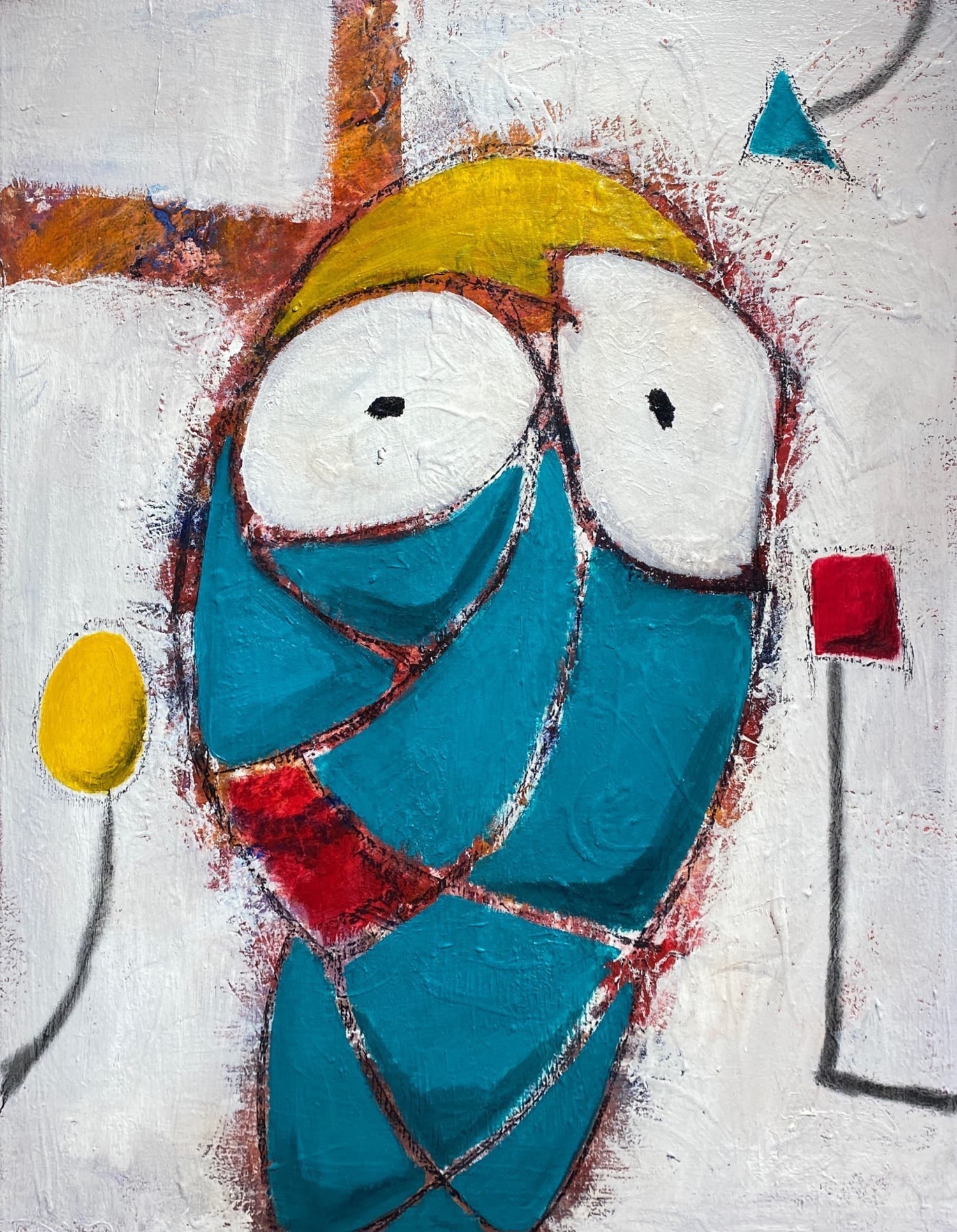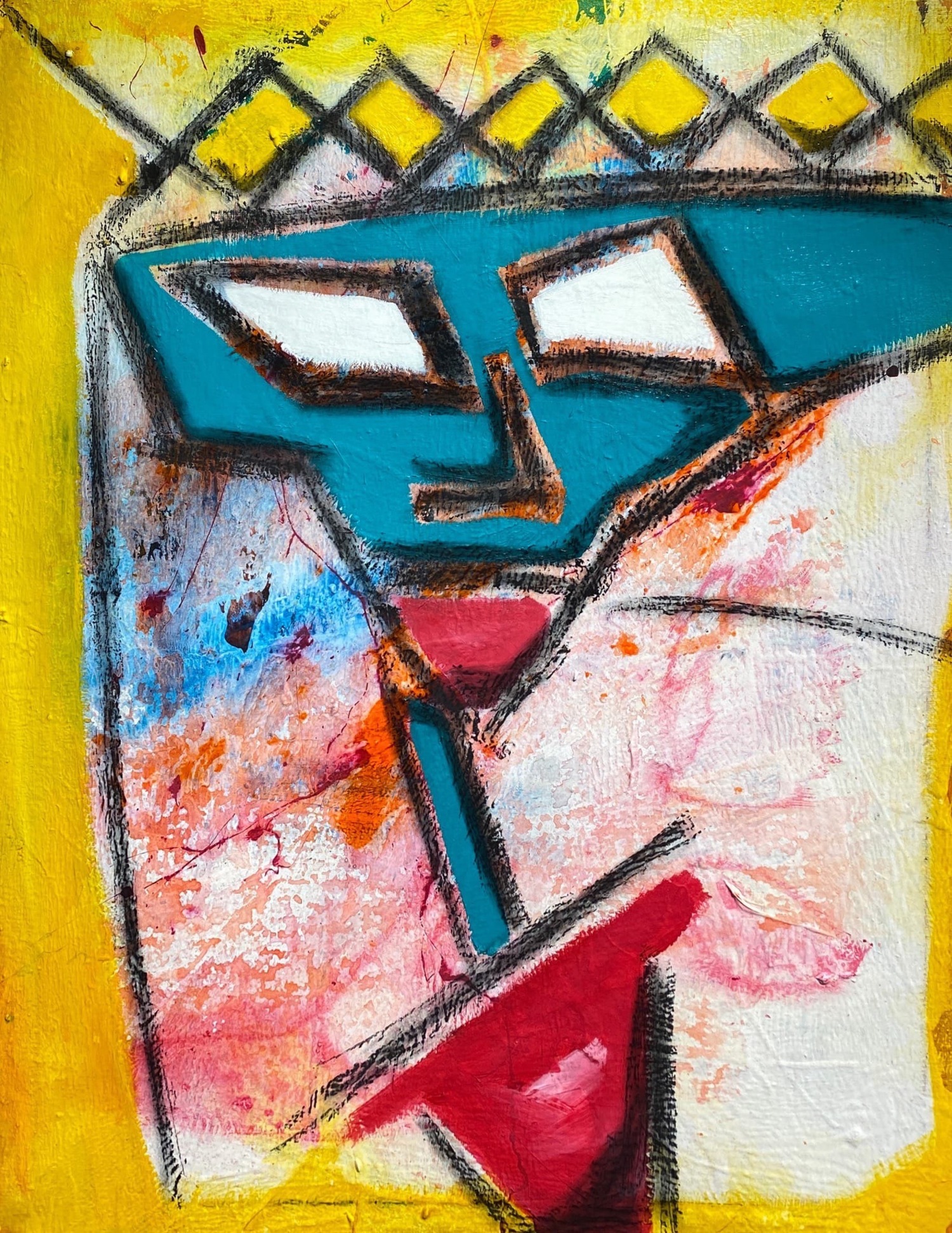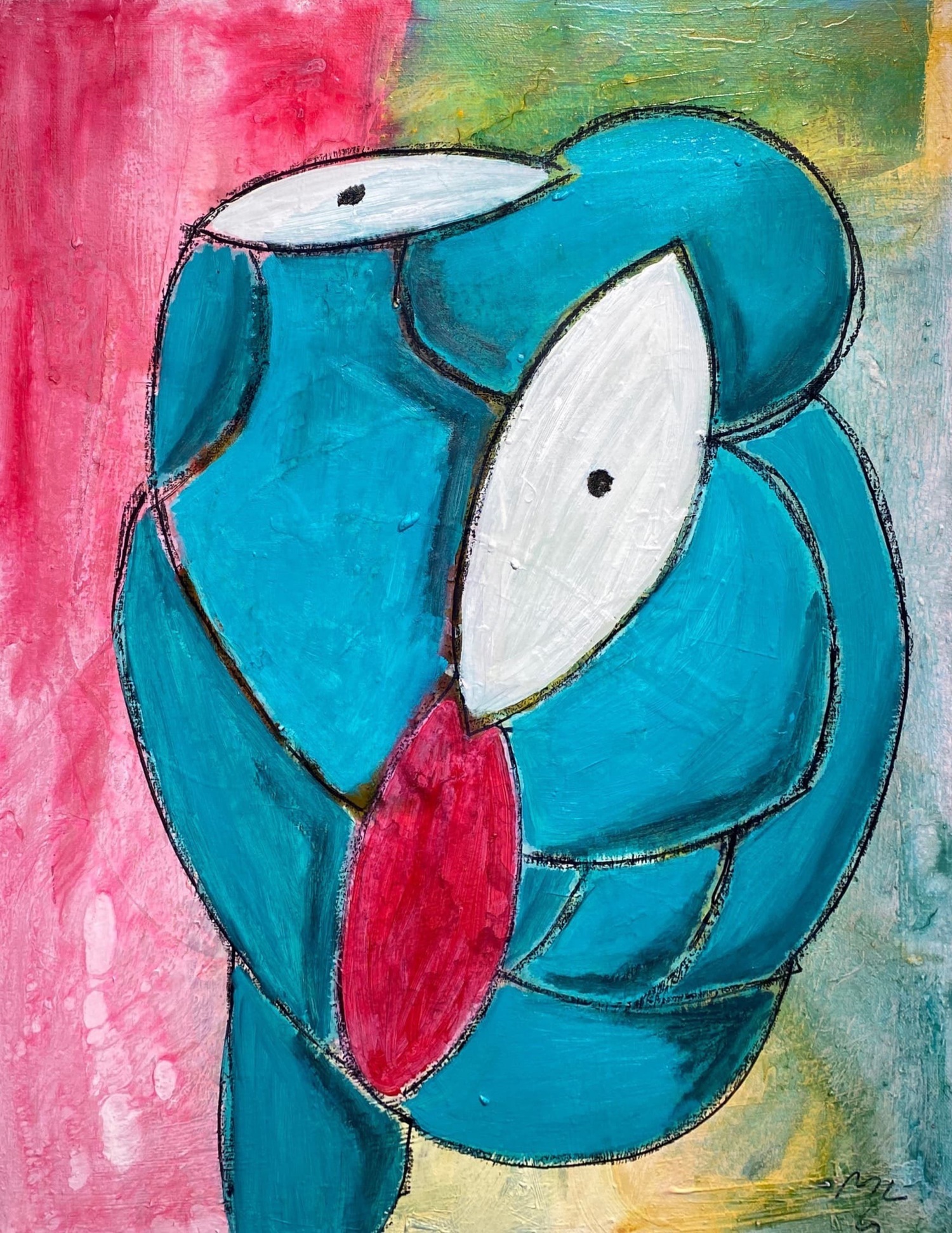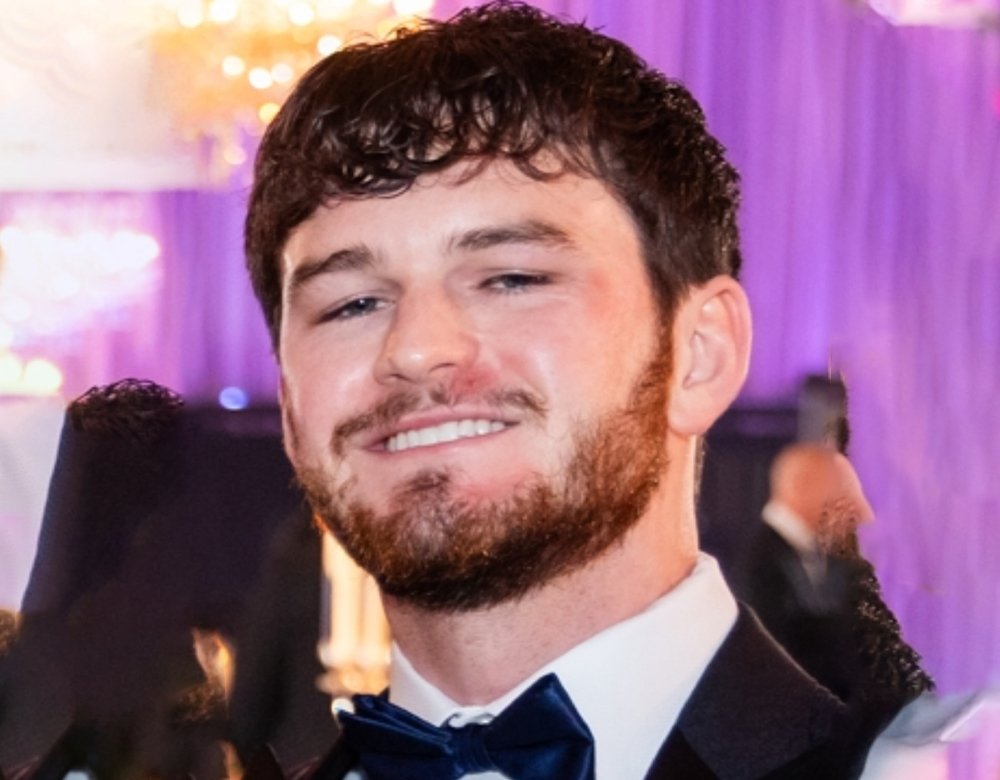Matt Gabler
Year of birth: 1998
Where do you live: Chicago
Your education: Self-taught, with a family legacy in the arts.
Describe your art in three words: Vibrant, Emotional, Resilient
Your discipline: Painter & Visual Artist.
Website | Instagram
Your work is deeply influenced by your family legacy, especially your grandfather, Matt Lamb. How do you balance honoring his artistic influence while also finding your unique voice as an artist?
My grandfather’s work taught me the power of art to tell stories and connect with people on a deeper level. While his legacy inspires me, I focus on expressing my personal experiences and emotions, finding my voice in bold colors and dynamic compositions. It’s not about following in his footsteps but building on the foundation he laid with a fresh perspective.
What role do you think art plays in helping people process or overcome difficult experiences, and how do you aim to reflect that in your own pieces?
Art has a unique way of creating space for healing—it’s both a mirror and a sanctuary. For me, every piece is a reflection of human resilience. I aim to channel my own struggles and triumphs into my work, inviting viewers to see themselves and perhaps find comfort or strength in the shared experience.
 Matt Gabler | Blue Snowcone
Matt Gabler | Blue Snowcone
The use of vibrant colors and bold strokes is central to your art. Can you talk about how these elements help convey the emotional weight of your work?
Vibrant colors and bold strokes are how I communicate what words often fail to express. Each hue represents a layer of emotion—joy, pain, hope—and the strokes create movement, echoing the chaos and beauty of life. They’re not just aesthetic choices; they’re an emotional language.
You’ve participated in exhibitions around the world, including prestigious events like the Louvre Biennale. How have these experiences shaped your artistic practice or your view of the global art scene?
You’ve participated in exhibitions around the world, including prestigious events like the Louvre Biennale. How have these experiences shaped your artistic practice or your view of the global art scene?
Exhibiting globally has broadened my perspective on how art transcends language and culture. It’s humbling to see how universal the emotional connection to art can be. These experiences have also pushed me to evolve, not just technically but in how I approach storytelling in my work.
 Matt Gabler | The Judgemental Crown
Matt Gabler | The Judgemental Crown
In your artist statement, you mention that your work is an invitation to reflect on our shared human experiences of struggle and triumph. Could you share a specific piece that embodies this theme for you?
One piece that stands out is A Meeting of Worlds. It’s a deeply personal work inspired by
experiencing new event, blending chaotic textures with bursts of color to represent the messy,
beautiful path from pain to growth. It’s about embracing the journey rather than the destination.
You’ve collaborated with organizations like the Cancer Treatment Centers of America and the Rizzo Foundation. How do these collaborations influence the direction of your art and your mission?
These collaborations remind me of the transformative power of art. They push me to create with purpose, knowing my work can contribute to healing or bring hope to those facing difficult times. It’s deeply fulfilling and aligns perfectly with my mission to create art that resonates on a human level.
What can audiences expect from your upcoming exhibitions in Europe and the Middle East? Are there any new themes or projects you’re excited to share?
Audiences can expect pieces that delve into themes of connection and resilience. I’m experimenting with layering techniques to create depth, both visually and emotionally. These exhibitions will also introduce a series reflecting on how cultural identities shape our shared human experience.
 Matt Gabler | The Cotton Candy Blues
Matt Gabler | The Cotton Candy Blues
As a self-taught artist, what challenges did you face in developing your style and technique, and how did you overcome them?
The biggest challenge was trusting my instincts. Without formal training, I felt the pressure to “prove” myself, but over time, I realized that my authenticity lies in my self-discovery. Experimentation and persistence were my teachers, and every misstep became part of my growth.


Leave a Reply